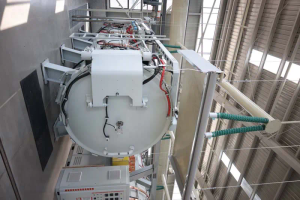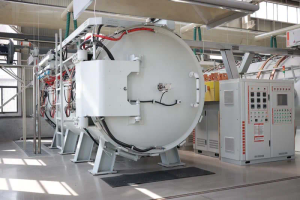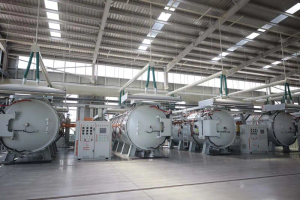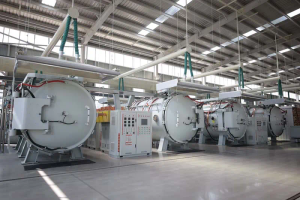Heat transfer characteristics of glass lined reactors
Glass-lined reactors are widely used in the chemical and pharmaceutical industries due to their unique combination of properties that make them suitable for various processes requiring controlled heating or cooling. Understanding the heat transfer characteristics of these reactors is crucial for optimizing their performance and ensuring efficient operation.
Introduction
Glass-lined reactors play a vital role in chemical processing, offering a versatile solution for a range of applications. This article delves into the intricate details of their heat transfer capabilities, exploring the factors influencing heat transfer efficiency, methods of enhancement, and practical considerations for industrial applications.
Fundamentals of Heat Transfer in Glass-Lined Reactors
Heat transfer in glass-lined reactors occurs through several mechanisms, primarily conduction, convection, and radiation. The glass lining itself acts as a barrier and facilitator of heat transfer, depending on its thickness and composition.
Glass, known for its insulating properties, reduces heat loss to the surroundings and maintains temperature uniformity within the reactor vessel. This thermal insulation is crucial for maintaining process stability and efficiency.
Factors Influencing Heat Transfer Efficiency
Several factors influence the heat transfer efficiency of glass-lined reactors:
1. Operating Temperature and Pressure: The temperature and pressure conditions inside the reactor affect the rate of heat transfer. Higher temperatures generally lead to faster heat transfer rates, while pressure impacts the boiling and condensation points of fluids.
2. Agitation and Mixing: Agitation enhances heat transfer by promoting fluid circulation and preventing temperature gradients within the reactor. Proper mixing ensures uniform heat distribution across the vessel.
3. Fluid Properties: The thermal conductivity and specific heat glass lined reactor agitator types capacity of the process fluid significantly influence heat transfer. Fluid viscosity and density also play a role in determining the convective heat transfer coefficient.
4. Reactor Design: The design of the reactor, including baffles, coil configuration (if present), and the geometry of the vessel, affects the flow patterns and thus heat transfer efficiency.
5. Insulation: External insulation layers around the reactor can minimize heat loss to the environment, optimizing energy efficiency and reducing operational costs.
Enhancement Techniques for Heat Transfer
To improve heat transfer efficiency in glass-lined reactors, various enhancement techniques are employed:
![]()
1. Internal Coils: Coil inserts or jackets within the reactor vessel facilitate heat exchange by increasing the surface area available for heat transfer.
2. Agitator Design: Optimizing the design of the agitator blades and speed enhances fluid circulation, promoting efficient heat transfer throughout the reactor.
3. Surface Modifications: Roughening or enhancing the surface of the glass lining can improve turbulence and increase the convective heat transfer coefficient.
4. Heat Transfer Fluids: Choosing an appropriate heat transfer fluid with high thermal conductivity and low viscosity can enhance overall heat transfer rates.
5. Optimized Operating Conditions: Adjusting operating parameters such as temperature, pressure, and agitation speed based on process requirements can maximize heat transfer efficiency.
Practical Considerations in Industrial Applications
In industrial settings, several practical considerations impact the heat transfer characteristics of glass-lined reactors:
1. Scaling Up: Scaling up from laboratory to industrial-scale reactors requires careful consideration of heat transfer dynamics to ensure consistent performance and product quality.
2. Maintenance and Cleaning: Regular maintenance and cleaning of the glass lining are essential to prevent fouling and maintain heat transfer efficiency over time.
3. Safety Considerations: Proper insulation and temperature control are critical for ensuring operator safety and preventing thermal hazards during operation.
4. Process Control: Implementing robust process control systems helps monitor and optimize heat transfer parameters in real-time, ensuring efficient operation and minimizing downtime.
5. Material Compatibility: Compatibility between the glass lining and process fluids is crucial to prevent corrosion and maintain long-term reliability.
Case Studies and Applications
Several case studies highlight the diverse applications and benefits of glass-lined reactors in different industries:
1. Chemical Industry: Used for synthesis, polymerization, and other chemical processes requiring precise temperature control and efficient heat transfer.
2. Pharmaceutical Industry: Essential for pharmaceutical manufacturing processes, including API synthesis, where product purity and quality are paramount.
3. Food and Beverage Industry: Employed for food processing applications such as fermentation and mixing, ensuring hygiene and product integrity.
4. Environmental Applications: Utilized in wastewater treatment and environmental remediation processes where controlled reactions and heat transfer are essential.
Conclusion
In conclusion, the heat transfer characteristics of glass-lined reactors are influenced by various glass lined reactor safety factors ranging from design and operating conditions to enhancement techniques and industrial applications. Understanding these factors is crucial for optimizing reactor performance, ensuring product quality, and achieving operational efficiency across diverse industries. As technology advances and process requirements evolve, continuous research and innovation in heat transfer enhancement will further enhance the capabilities of glass-lined reactors in meeting industry demands.
https://oaicon.com/



